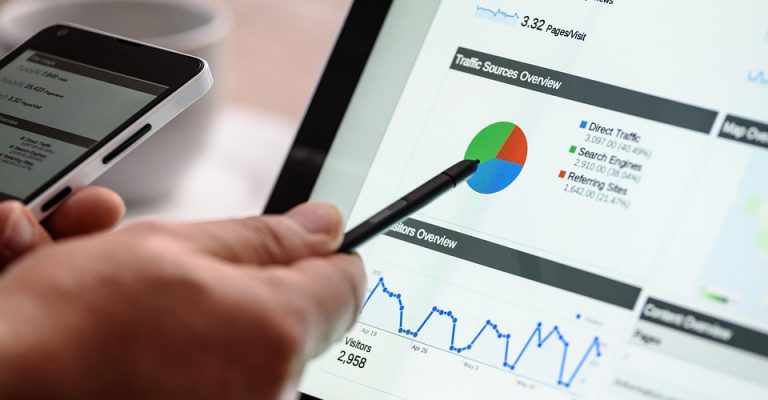Contrary to popular belief, content creation is not art. But, it’s a craft you hone over time. Content marketing, on the other hand, is a science. It’s as much about the creative process of content development as it is about tracking the results (if the content you have created is helping you meet the desired goals). It’s as much about the numbers, KPIs, and analysis as it is about creative output. One crucial element of content marketing is content analysis.
The Four W’s of Content Analysis
Before we get down to numbers, metrics, and KPI’s, i.e., the “How” of content analysis, let’s straighten out other important questions associated.
What is content analysis?
Every piece of content you create for your business has certain goals. It can be SEO-oriented content to help you rank high in search engine results. Or you create content to help establish you as a thought leader within the industry. Or it can be promotional content for your sales funnel. Analyzing whether your content is achieving those goals and how effective it is can be considered content analysis.
Why is it important?
From a reporting perspective, content analysis is important because it helps you justify investing time and resources in content marketing. If you don’t have to answer to anyone, you need to quantify and understand how effective your content has been so far. A periodic analysis of content that has been performing good or bad helps you understand what you are doing right and what needs improvement.
When should you do it?
The wrong answer is that whenever you have to report. A good way is to analyze your existing content on a weekly, monthly, or quarterly basis (based on how much content you create within a timeframe). This helps you tweak or get rid of content that’s not performing well right away before it weighs down your website.
Who should perform content analysis?
Every business that leverages content marketing should perform this analysis. The team responsible for creating the content strategy as well as the content should perform the analysis as well. Though in larger teams, there might be enough personnel onboard that objective individuals might be able to perform the analysis. In either case, the report you prepare for yourself or the managers should accurately represent how your content is performing. False positives will only delay the inevitable.
Content Analysis Guide
Content analysis tends to be both qualitative and quantitative. Many content creators start with the quantitative analysis using relevant metrics to identify good and bad performing content. Then they go a step deeper to analyze the quality of the content and figure out why it’s not performing as well as the other.
An important thing to understand here is that, like all other online marketing efforts, content creation doesn’t stand alone in a vacuum. So if a piece of content is not performing as well as you hoped it would, the quality of the content alone might not deserve the blame. Be pragmatic and analyze your content relative to other good/lousy performing content pieces on your site.
Content Goals
Start with checking against the goals you set when you created your content. Some of the most common goals of content creation (and the metrics you might use to identify if the plan has been met) are:
Brand Awareness: You simply want to get the word out about your brand. You want a lot of people to see it (reach), new people to find your business because of it (unique visits), and other websites to link to it (inbound links).
Lead Generation: If you created (gated) content to help you generate more leads, the number of leads you got and how many of them ended up converting should tell you if the content did its job.
Reader Engagement: Successful engagement-oriented content results in social shares, likes, and comments, i.e., readers engaging with your content.
Sales: That’s the ultimate goal of most marketing efforts. Your conversion rates should tell you whether you are on the right track with your content marketing or not.
Thought Leadership: It’s a relatively mature content marketing goal. Steadily increasing website traffic, growing social media following, branded searches, and more backlinks from websites to others within your niche can indicate whether or not you are close to meeting your goal of becoming a thought leader.
Important Metrics To Use For Content Analysis
There are a few metrics you need to keep an eye on when performing content analysis. In a similar Moz guide, they are dubbed “core” content analysis metrics. We’ve not included website traffic in this because it’s governed by a wide variety of other factors, compared to just content.
But if you publish good content regularly, and your website traffic is still declining, you might be doing something wrong. Or your competitors might be following a better content marketing plan and attracting your traffic.
Pageviews/Unique Pageviews
Pageviews is an encouraging yet sometimes misleading metric. Apart from some webpages (like guides, cheat sheets, and pillar content pieces) which attract repeat users regularly, focus more on unique pageviews. Consider the metric over time (unless it’s newsjacking) and see whether the number of unique pageviews is steadily increasing or declining.
If one piece of content is performing poorly compared to other, similar pieces on your website, do qualitative analysis. Topics can get irrelevant over time, and better fresh content can bury old content in rankings. Modifying it with new information and data, tweaking the content, and then observing unique pageviews might help you with a more accurate analysis.
Time Spent On Page
The time spent on page metric can help you determine which of your content pieces are attracting more of your readers’ attention and which aren’t. Though this metric can easily be skewed (people opening multiple tabs and interacting with your page periodically), it can still give you valuable information about your content, especially if you compare it to similar pieces.
Bounce Rate
Bounce rate is a very important metric to help you understand whether your content is fulfilling its purpose or not. If you have created a sales-related page and its goal is to convert, a high bounce rate from the page means something is amiss. But if you had a different content goal, like the fact that it was meant to be a stand-alone informative piece, then readers bouncing off (after spending an adequate amount of time on that page) without performing another action is acceptable.
Engagement Metrics
The like button beneath the content piece and comments are also important metrics to identify whether an engaging metric has done its job right. Social shares can also be considered part of the mix. Both good and bad comments are useful, and they can help you figure out what your audience didn’t like about the content, so you can be better prepared when creating the next piece of content.
Competitor Content Analysis
Just like your own content, you can analyze your competitor’s content as well. It’s especially effective at the early stages of content creation when you can learn better SEO practices and tricks from your higher-ranking competitors. And at a deeper level, you can also see how they attract and retain their customer-base through their content.
You may not have access to all the metrics for your competitors, but you can learn a lot from their social media engagements, content promotion, number of backlinks, and traffic. The goal should to find your most successful competitor and build upon their content. You might offer more in-depth research, better formatting, or make the content more digestible via infographics and charts.
Many online tools can help you find your competitor’s top-ranking pages. You can run a qualitative analysis of the content to figure out what they are doing right.
Examining Before Publishing The Content
When you have published the content and have the data from the relevant metrics, it’s easy to analyze the performance of your content. However, when you have run some content market campaigns in the past and also have data from your competitors, you can run content analysis before publishing the content or starting your marketing campaign. So if the content wasn’t created the right way, had the same mistakes your previous bad performing content pieces had or can be tweaked by following well-performing content (yours or your competitor’s), you can publish potent content with a higher chance of achieving your marketing goals right from the beginning.
Final Words
Content marketing is not a one-time thing. It’s a constant process that you can improve over time. The more you learn from your mistakes and your successes (by performing regular content analysis), the better you are likely to get with your content creation process. It’s also important to note that you need to have the right tools to perform your content analysis.
In some cases, you’d need to create custom metrics for more in-depth research about why certain content pieces aren’t performing as well as others. A lot of those tools are freely available, and with practice, you can maximize their analysis potential.
Not every content piece should be analyzed the same way, and the big content marketing picture should always be kept in mind when performing the content analysis process. Only then will your analysis yield beneficial and helpful results.

